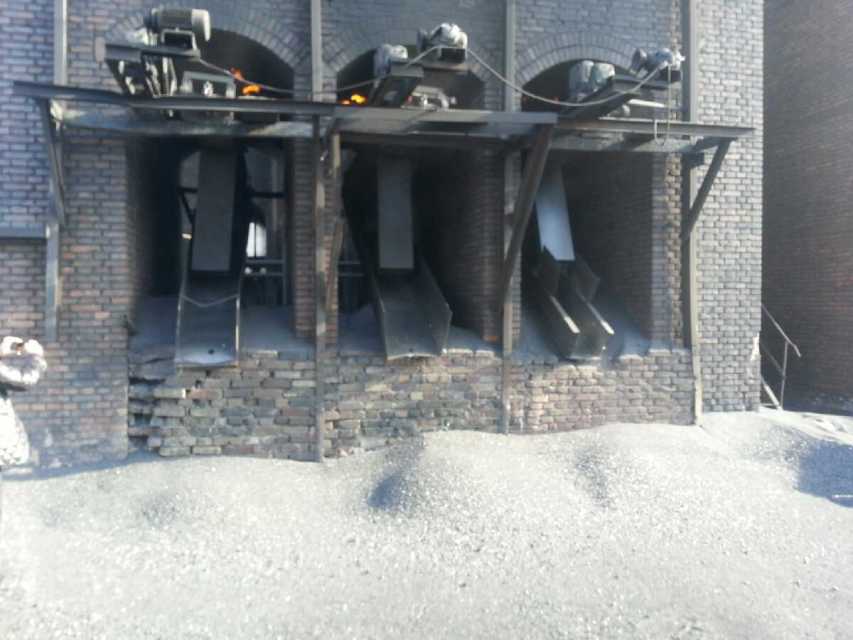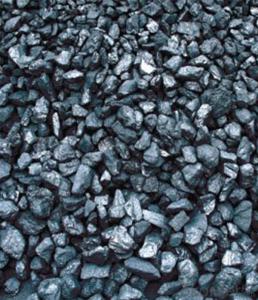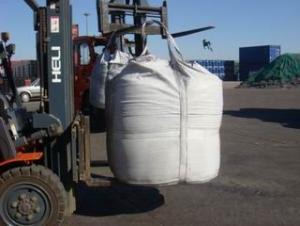FC 93% GAS Calcined Anthracite
- Loading Port:
- China Main Port
- Payment Terms:
- TT or LC
- Min Order Qty:
- -
- Supply Capability:
- -
OKorder Service Pledge
OKorder Financial Service
You Might Also Like
FC 93% GAS Calcined Anthracite
Date Sheet For Your Reference:
F.C | S | ASH | V.M | MOISTURE |
96%MIN | 0.18%MAX | 2.5%MAX | 1.2%MAX | 0.3%MAX |
95%MIN | 0.25%MAX | 4%MAX | 1.2%MAX | 0.5%MAX |
94%MIN | 0.3%MAX | 4.5%MAX | 1.2%MAX | 0.5%MAX |
93%MIN | 0.3%MAX | 5.5%MAX | 1.2%MAX | 0.5%MAX |
92%MIN | 0.3%MAX | 6.5%MAX | 1.2%MAX | 0.5%MAX |
91%MIN | 0.3%MAX | 7.5%MAX | 1.5%MAX | 0.5%MAX |
90%MIN | 0.35%MAX | 8.5%MAX | 1.5%MAX | 0.5%MAX |
Application
1. This product can be used in steel producing as a kind of carbon additive
2. We can get high quality steel if use it.
3. It can also be used in special steel producing and casting or other related industry
4. It can be used as carbon raiser (Recarburizer) to produce high quality steel, cast iron and alloy.
5. It can also be used in plastic and rubber as an additive.
6. Used as carbon raiser (Recarburizer) to produce high quality steel, cast iron and alloy.
7. It can also be used in plastic and rubber as an additive.
Package:
1) 1mt jumbo bag
2) Only25kgs small bags
3) 25kgs*40 in 1mt jumbo bags
4) Size:1-4mm 1-3mm 1-5mm 2-6mm 3-5mm 1-10mm
5) We can produce as customer’s requirement
6) Delivery time:15day against contract
7) Proction Ability:1000mt/month
Why Choose Calcined Anthracite ?
It may substitute massively refinery coke or the stone grinds.
Its cost is much less than the refinery coke and the stone grinds.
Use as the fuel, its calorific value achieve above 9386K/KG. It substitute burnt carbon massively.
Burnt carbon export have quota;so the carbon additive price superiority is similarly obvious.
Pictures of Calcined Anthracite:


- Q:What are the impacts of carbon emissions on the stability of islands?
- The stability of islands is greatly affected by carbon emissions, with significant and wide-ranging impacts. Climate change, which is caused by carbon emissions, leads to various consequences such as sea level rise, increased storm intensity, and ocean acidification. All of these factors pose serious threats to the stability of islands. Sea level rise is an immediate and visible consequence of carbon emissions on islands. As global temperatures rise, glaciers and ice caps melt, and ocean waters expand, the sea levels gradually increase. This rise in sea level puts low-lying islands in danger of being flooded, eroded, or even completely disappearing. In fact, many small islands, especially in the Pacific and Indian Oceans, are already witnessing the effects of rising sea levels, resulting in the loss of land, displacement of populations, and destruction of infrastructure. Another impact of carbon emissions on islands is the heightened intensity and frequency of storms. The warmer ocean temperatures caused by carbon emissions fuel the formation of tropical storms and hurricanes, which can cause devastating damage to island communities. These storms can lead to widespread destruction of homes, infrastructure, and ecosystems, resulting in long-term economic and social disruptions. Islands are particularly vulnerable to storm surges, which occur when strong winds push seawater onto land, causing extensive flooding and erosion. Ocean acidification, which is caused by the excess absorption of carbon dioxide by the ocean, is another significant consequence of carbon emissions on islands. Increased levels of carbon dioxide in the atmosphere lead to increased absorption by the ocean, resulting in a decrease in pH levels and making the ocean more acidic. This acidification poses a threat to coral reefs, which are crucial for island ecosystems and act as natural barriers against wave action and storm surge. Coral reefs provide habitats for a diverse range of marine life and are vital for tourism and local economies. The loss or degradation of coral reefs due to ocean acidification affects not only the biodiversity but also the ability of islands to withstand climate-related impacts. In conclusion, the impacts of carbon emissions on the stability of islands are profound and severe. Rising sea levels, increased storm intensity, and ocean acidification all present significant threats to the physical and social stability of island communities. It is crucial to take urgent action to reduce carbon emissions, invest in adaptation measures, and support island nations in building resilience to these impacts.
- Q:What are the effects of carbon emissions on the stability of estuaries?
- Estuaries, which are highly productive and diverse ecosystems, are greatly impacted by carbon emissions. These emissions, primarily in the form of carbon dioxide (CO2), contribute to climate change and ocean acidification, resulting in detrimental effects on estuaries. Sea-level rise is one of the most significant consequences of carbon emissions on estuaries. As global temperatures increase, the melting of glaciers and ice caps causes sea levels to rise. Estuaries, being low-lying areas where rivers meet the sea, are particularly vulnerable to this rise. Consequently, higher water levels lead to increased flooding, erosion, and saltwater intrusion into freshwater systems within estuaries, negatively affecting their overall stability. Furthermore, the concentration of CO2 in the atmosphere leads to ocean acidification. When CO2 dissolves in seawater, it forms carbonic acid, which lowers the water's pH. This acidification has detrimental effects on marine life within estuaries, especially organisms with calcium carbonate shells like shellfish and oysters. The increased acidity makes it more challenging for these organisms to build and maintain their shells, resulting in reduced populations and biodiversity in estuaries. Climate change, caused by carbon emissions, also alters temperature and precipitation patterns in estuaries, disrupting the delicate balance of saltwater and freshwater. Estuaries rely on this balance to support their unique ecosystems. Changes in temperature and precipitation disturb this equilibrium, causing significant shifts in species composition and distribution. Some species may struggle to adapt, while invasive species may thrive, further destabilizing estuarine ecosystems. In conclusion, the effects of carbon emissions on estuaries are extensive and varied. Rising sea levels, ocean acidification, and climate-induced changes in salinity and freshwater availability all contribute to the degradation of estuaries and the loss of biodiversity. To protect and preserve these essential ecosystems for future generations, it is crucial to reduce carbon emissions and mitigate climate change.
- Q:How does carbon affect the acidity of oceans?
- Carbon dioxide (CO2) is a major contributor to the acidity of oceans. When CO2 is released into the atmosphere through human activities such as burning fossil fuels and deforestation, a significant portion of it is absorbed by the oceans. This process, known as ocean acidification, leads to an increase in the concentration of hydrogen ions in the water, resulting in a decrease in pH levels and an increase in acidity. When CO2 dissolves in seawater, it reacts with water molecules to form carbonic acid (H2CO3). This reaction releases hydrogen ions (H+), which increase the acidity of the water. The increased acidity affects the delicate balance of chemical reactions that support life in the ocean, particularly those involving calcium carbonate. Calcium carbonate is a vital component in the formation of shells and skeletons of many marine organisms, including corals, shellfish, and some plankton. As the acidity of the ocean increases, it becomes harder for these organisms to build and maintain their calcium carbonate structures. This can lead to reduced growth rates, weakened shells, and increased vulnerability to predators and disease. Ocean acidification also affects the entire marine food web. Many species rely on shell-forming organisms as a food source or as habitat, and their decline can have cascading effects on the entire ecosystem. Additionally, acidification can disrupt the balance of phytoplankton, the microscopic plants that are the foundation of marine food chains. Furthermore, carbon dioxide in the ocean can react with water to form bicarbonate ions (HCO3-) and carbonate ions (CO32-). These ions are essential for maintaining proper pH levels and the ability of marine organisms to regulate their internal chemistry. However, as CO2 levels rise, the concentration of carbonate ions decreases, making it more difficult for organisms to access the carbonate they need to build their shells and skeletons. Overall, the impact of carbon on ocean acidity is significant and has far-reaching consequences for marine life. It is crucial to reduce carbon emissions and take measures to mitigate and adapt to the effects of ocean acidification in order to protect the health and biodiversity of our oceans.
- Q:What is the basic principle of carbon fourteen detection?
- There are 3 kinds of carbon isotopes in nature, and their weight ratio is 12:13:14. They are expressed by carbon -12, carbon -13 and carbon -14 respectively. The first two are stable isotopes. Carbon -14 is radioactive. It exists in the atmosphere and is generated in the upper atmosphere by cosmic rays, neutrons, and atmospheric nitrogen nuclei. It combines C4O2 molecules with oxygen in the atmosphere, which is the same as carbon dioxide (CO2). Therefore, it mixes with carbon dioxide to participate in the natural carbon exchange movement. It is absorbed by plants by photosynthesis and stored in plants. People and animals need to eat plants, so they are also stored in human and animal bodies. During the life of the organism, they continuously acquire the radioactive carbon from the atmosphere. But when an animal or plant dies, it stops absorbing and reduces the radioactive carbon in the body. For about 5730 years, its content could be attenuated by half. So physicists call the half-life 5730 years. Therefore, as long as the instruments to measure the trees, grain, animal bones and bone biological remains in the existing carbon content of -14, compared with its original carbon -14 level, you can calculate their death in many years ago, which can be inferred and their coexistence remains (such as construction sites, tombs or other relics how many years have elapsed since).Pro, please [adopted the answer], your adoption is the driving force for my answer, thank you.
- Q:Why vegetarianism can reduce carbon emissions?
- This specific or calculated, and if you have done ISO14064, you should know that every year will be the carbon emissions statistics, the general is your year of all activities in accordance with the corresponding CO2 coefficients into CO2 equivalent;If you eat according to statistics, that is to calculate what you eat, how much CO2 is needed to produce;
- Q:How does carbon dioxide affect textile production?
- Textile production can be significantly impacted by carbon dioxide in various ways. Firstly, the manufacturing process of textiles generates carbon dioxide, which contributes to overall greenhouse gas emissions and worsens climate change. This, in turn, can result in long-term consequences like extreme weather events, rising temperatures, and sea-level rise. These outcomes can disrupt the supply chain and production of textiles. Furthermore, carbon dioxide emissions from textile production contribute to air pollution, which can adversely affect human health. Workers exposed to high levels of carbon dioxide may experience respiratory problems and other respiratory diseases as a result of the release of this greenhouse gas. Moreover, carbon dioxide is commonly used in the dyeing and finishing process of textile production. However, this practice can have detrimental effects on the environment. When carbon dioxide is released into water bodies during the dyeing process, it can contribute to water pollution, contaminating water sources and harming aquatic life. Additionally, excessive use of carbon dioxide in textile production can have economic implications. Since carbon dioxide is a byproduct of burning fossil fuels, its production is inherently tied to the consumption of non-renewable resources. The reliance on fossil fuels makes textile production vulnerable to price fluctuations, as the cost of carbon dioxide emissions and energy production can vary significantly. To mitigate the negative impacts of carbon dioxide on textile production, several measures can be implemented. These include adopting cleaner production techniques and technologies that reduce carbon dioxide emissions, such as utilizing renewable energy sources or implementing carbon capture and storage systems. Furthermore, investing in sustainable and environmentally-friendly materials, like organic cotton or recycled fibers, can help reduce the carbon footprint of textile production. Overall, reducing carbon dioxide emissions in textile production is crucial for the industry to become more sustainable and mitigate its environmental and health impacts.
- Q:What is carbon nanocomposite?
- A carbon nanocomposite is a material that combines carbon nanotubes or graphene with a matrix material like polymers or metals to form a composite material. Usually, small amounts of carbon nanotubes or graphene, often in the form of nanoparticles, are added to improve the mechanical, electrical, and thermal properties of the composite material. Carbon nanotubes are cylindrical structures made of carbon atoms arranged in a hexagonal lattice, while graphene is a single layer of carbon atoms arranged in a two-dimensional lattice. These carbon-based materials have exceptional properties, such as high strength, electrical conductivity, and thermal conductivity. When incorporated into a composite material, these properties can be transferred to the overall structure, resulting in improved performance. Various industries and applications have explored the use of carbon nanocomposites. For instance, in aerospace, researchers have investigated these materials for their lightweight and high-strength properties, which could potentially enhance the fuel efficiency and durability of aircraft components. In electronics, carbon nanocomposites show promise for developing high-performance sensors, conductive films, and energy storage devices. Moreover, they have been studied for potential applications in medical devices, automotive parts, and energy storage systems. In summary, carbon nanocomposites offer the opportunity to create materials with enhanced properties by leveraging the unique characteristics of carbon nanotubes or graphene. However, challenges in production and scalability still exist, and further research is needed to optimize their performance and cost-effectiveness for various applications.
- Q:What are the consequences of increased carbon emissions on economic stability?
- Increased carbon emissions have significant consequences on economic stability. Firstly, the costs associated with climate change impacts such as extreme weather events, rising sea levels, and damage to infrastructure can burden economies, leading to increased expenditures for adaptation and recovery. Additionally, carbon-intensive industries may face regulatory measures and higher costs, impacting their competitiveness and potentially leading to job losses. The need for transitioning to cleaner energy sources and implementing carbon pricing mechanisms can also entail upfront investments and adjustment costs for businesses. Finally, the potential disruption of global supply chains due to climate-related events can disrupt trade and negatively impact economic stability. Overall, increased carbon emissions pose risks to economic stability by exacerbating climate change impacts and necessitating costly adjustments.
- Q:How does carbon affect the fertility of soil?
- Carbon is an essential element for soil fertility as it influences various soil properties and processes. When carbon is added to the soil, it helps improve its structure and water holding capacity. Organic matter, which is rich in carbon, serves as a food source for microorganisms, which in turn promote nutrient cycling and soil aggregation. These microorganisms break down organic matter into simpler compounds, releasing essential nutrients that are readily available for plants. Additionally, carbon also acts as a sponge, holding onto nutrients like nitrogen and preventing their leaching, thus enhancing nutrient availability for plants. Moreover, carbon-rich soils tend to have a higher cation exchange capacity, which means they can retain and release nutrients more effectively. By maintaining and increasing soil carbon levels, we can enhance soil fertility, promote plant growth, and support sustainable agriculture practices.
- Q:Glucose contains resveratrol (C14H12O3) to determine the mass ratio of resveratrol and carbon dioxide of the same quality as carbon dioxide
- They are x and y, containing carbon equal, according to the mass of an element = the mass of a compound * the elementMass fractionFor C14H12O3, the carbon mass fraction is C%=12*14/ (12*14+12+16*3) *100%=73.68%For CO2, the mass fraction of carbon is 12/ (12+16*2) =27.27%There is x *73.68%=y*27.27%So there's X: y =57:154
1. Manufacturer Overview |
|
|---|---|
| Location | |
| Year Established | |
| Annual Output Value | |
| Main Markets | |
| Company Certifications | |
2. Manufacturer Certificates |
|
|---|---|
| a) Certification Name | |
| Range | |
| Reference | |
| Validity Period | |
3. Manufacturer Capability |
|
|---|---|
| a)Trade Capacity | |
| Nearest Port | |
| Export Percentage | |
| No.of Employees in Trade Department | |
| Language Spoken: | |
| b)Factory Information | |
| Factory Size: | |
| No. of Production Lines | |
| Contract Manufacturing | |
| Product Price Range | |
Send your message to us
FC 93% GAS Calcined Anthracite
- Loading Port:
- China Main Port
- Payment Terms:
- TT or LC
- Min Order Qty:
- -
- Supply Capability:
- -
OKorder Service Pledge
OKorder Financial Service
Similar products
New products
Hot products
































